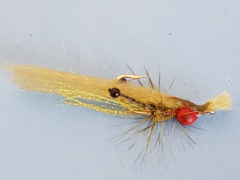Saltwater – tropical
{{start}}
{{end}}
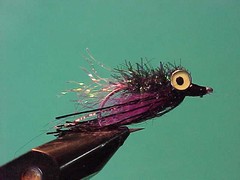
{{+1}}Bass vampire{{-1}}
{{start}}
The fly is particularly useful in larger water and can be fished quite deep. For inactive fish John recommends a slow retrieve and even pauses of up to 15 seconds. If fish are active a range of faster stripping actions will yield success. Whilst the black and purple Vampire gets the most press its worth following John's lead and experimenting with different colours for different fisheries.{{end}}

{{+1}}Chatto’s Pusher – Brown bomber version{{-1}}
{{start}}
I published this fly back in 2011. It casts easily and displaces or pushes a lot of water when retrieved. That water displacement at the head creates currents along the body which activate the body materials. The black over gold version (ie gold bomber colours) is particularly good over weed beds and in dirtier water.{{end}}
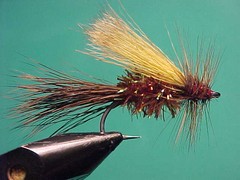
{{+1}}Bass stimulator – Chatto’s tie{{-1}}
{{start}}
For a long time I simply sized up my trout stimulator and used them on bass unfortunately they just didn't offer bass a big enough morsel and even though they were bigger than anything I would use for trout they still landed too softly ... not announcing their presence to the bass. A while back I got round to addressing the problems and after a reasonable amount of experimentation came up with this version of a stimulator which ticks all the boxes.{{end}}
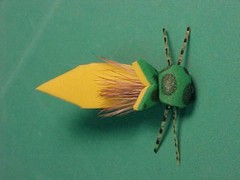
{{+1}}Bass foam hopper{{-1}}
{{start}}
When I converted my trout foam hopper for use as a bass and tropical fly fishing I added a sparkle chenille under-body and grossed it up dramatically so that it would withstand the aggressive nature of fish like Australian bass and tropical species such as mangrove jack.{{end}}
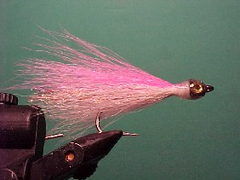
{{+1}}Jiggy head{{-1}}
{{start}}
Jiggy heads are similar to bead heads except they are designed for salt water use and they have an obvious fish head shape and have a recessed area on each side incorporated to accommodate stick on holographic eyes. They are also covered with epoxy once the fly is tied. They were designed by Bob Popovics for use on flies that are fished deep in a jig fashion for pelagic fish.{{end}}
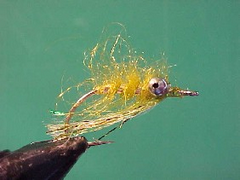
{{+1}}CNN – Chatto’s original{{-1}}
{{start}}
No this is not a fly promoted by a news network, rather the CNN stand for "Cheap aNd Nasty". I first tied this fly for use around structure where if you don't loose a few flies then your not in the game. The fly I had previously used in those situations was an estuary fly that cost between $2 and $3 to make. Doesn't sound like much but after 5 or 6 snags in a session you have to wonder. The CNN costs less than $1 to tie, is easy to tie and it works really well either fished alone or as a dropper fly behind a popper or beetle.{{end}}
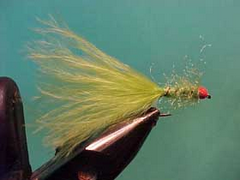
{{+1}}Fuzzel buggers{{-1}}
{{start}}
The finished fly has a sort of "halo" of loose fibres around the fuzzeled part of the fly and this can be very effective. I tie two versions. The first has no hackle and the second incorporates a soft hackle just behind the bead if a bead is incorporated in the tie but otherwise behind the eye of the hook. Both work well in different situations.{{end}}
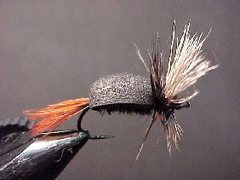
{{+1}}Bandit{{-1}}
{{start}}
If bass are not actively feeding they will generally sit deep and either in or close to structure and out of reach of dry flies and you'll find it easier to target them with a seductive wet fly fished deep and slow. When their active its a whole different story and they will be attracted to almost any surface disturbance.{{end}}

{{+1}}Flash Harry variant{{-1}}
{{start}}
This Flash Harry variant is one of those flies I'll always give a swim particularly if the water is a bit discoloured or if its windy and rough. I like to fish it on a fast sinking line either ripped or with a stop and start jerky retrieve or roly-poly. Chuck in plenty of pauses in your retrieve and make sure you hang the fly before recasting. This fly also fishes well across species and is attractive to Bass, EP's. I carry smaller versions in red, chartreuse, gold and root with black or olive tails.{{end}}














